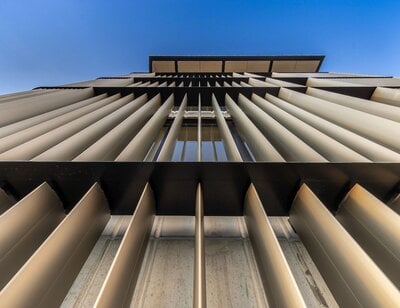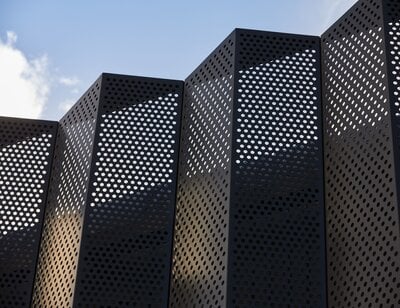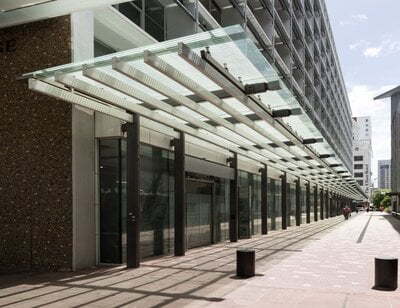.jpg?width=1430&name=0982215001557811467%20(1).jpg)
Over the years we've been fortunate to work with a number of leading architects on a hugely varied range of projects. They have always impressed. Especially with the ability of architecture to tell a story that ofttimes draws upon the people and history of the immediate area, or from the surrounding architecture and natural landscape. This is probably at its most important and often, its most beautiful, when it comes to Māori design.
We are not experts in Māori design, but we are experts at bringing architectural intent into reality. We enjoy helping architects to weave their narrative for a building exterior, selecting materials and fabrication techniques that meet the requirements of durability, sustainability, structural integrity and compliance.
We have been exploring the subject and learning about the principles that underpin Māori design in New Zealand architecture so we can gain a greater understanding of what lies behind the architectural intent.
Te Aranga Māori Design Principles
Drawing on the Te Aranga Māori Cultural Landscape Strategy, which expressed the desire to enhance Mana Whenua presence in design, the Te Aranga Māori Design Principles were established to provide guidance and embed Mana Whenua values in the design process. Doing so will positively aid the development of better urban environments, which will better link the history, stories and aspirations of the tangata whenua of the lands of the City being built upon.
The 7 design principles are underscored by a number of core Māori values:
- Rangatiratanga: The right to exercise authority and self-determination within one's own iwi/hapū realm.
- Kaitiakitanga: Managing and conserving the environment as part of a reciprocal relationship, based on the Māori world view that humans are part of the natural world.
- Manaakitanga: The ethic of holistic hospitality whereby Mana Whenua have inherited obligations to be the best hosts they can be.
- Wairuatanga: The immutable spiritual connection between people and their environments.
- Kohahitanga: Unity, cohesion and collaboration.
- Whanaungatanga: A relationship through shared experiences and working together which provides people with a sense of belonging.
- Matauranga: Māori/Mana Whenua knowledge and understanding.
Design Principle #1: Mana
The first principle lays the foundation for all that follows by making sure the mana of the iwi and hapū as Mana Whenua is recognised and respected. It establishes the working relationship and a platform for Mana Whenua values and characteristics to directly influence the design process from the very beginning.
Design Principle #2: Whakapapa
Recognising and celebrating the significance of Mana Whenua ancestral names, this principle becomes a way of connecting the historical narrative and enhancing a sense of place connection. For example, researching the correct ancestral names and using them in signage and wayfinding.
Design Principle #3: Taiao
Respecting the human connection to the land and the natural world, Taiao focuses on protecting, restoring and enhancing the natural environment. This means incorporating the use of local flora and fauna, aiding local biodiversity and establishing ecological corridors.
Design Principle #4: Mauri Tu
Building upon the preceding principle, this talks more to environmental health and it's protection, maintenance and enhancement. In particular, making sure water, energy and material resources are used in a considered manner. It addresses the need to consider the Mauri, or life force and essence, during design. In application, this translates to good custodianship of waterways, soil and passive use of rain and sun.
Design Principle #5: Mahi Toi
This talks to the need for the design to capture and reinscribe the narratives of iwi/hapū. This should include engaging iwi/hapū mandated design professionals to assist in translating those narratives into the modern design environment. It becomes the physical representation of the narrative in the design so the building tells a story and inextricably links it to the past.
Design Principle #6: Tohu
There are a number of significant sites which must be identified, preserved and even enhanced. This principle addresses the need to do this so that cultural landmarks are acknowledged and inform the design response where appropriate.
Design Principle #7: Ahi Ka
Whereas the other principles largely connect the past and present, this principle recognises the importance of Ahi Ka, so that iwi/hapū have an enduring presence in the rohe where they live, work and play.
The characteristics of New Zealand are unique. An obvious statement, it would be easy to overlook or ignore those characteristics in the rush to build more and build up, allowing functional demand and expediency to override historical narratives and identity. So the 7 design principles are a way to help maintain and even amplify what is unique and important to New Zealand and our national identity. For us at Insol, it provides a remarkable opportunity to aid creative design that is not only aesthetically pleasing and functional, but that also carries meaning and truly connects the finished work with both people and place.
Related Reading:








